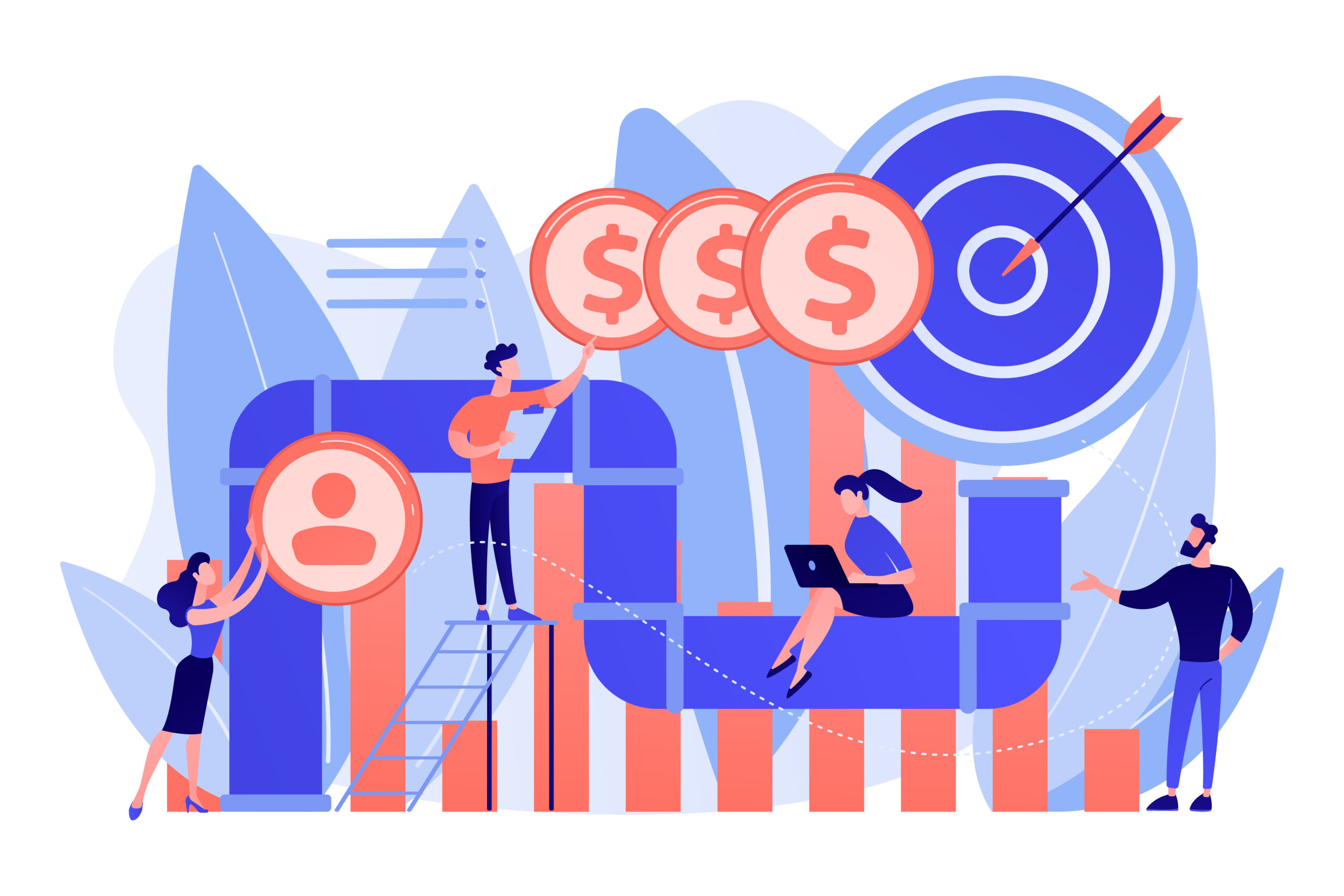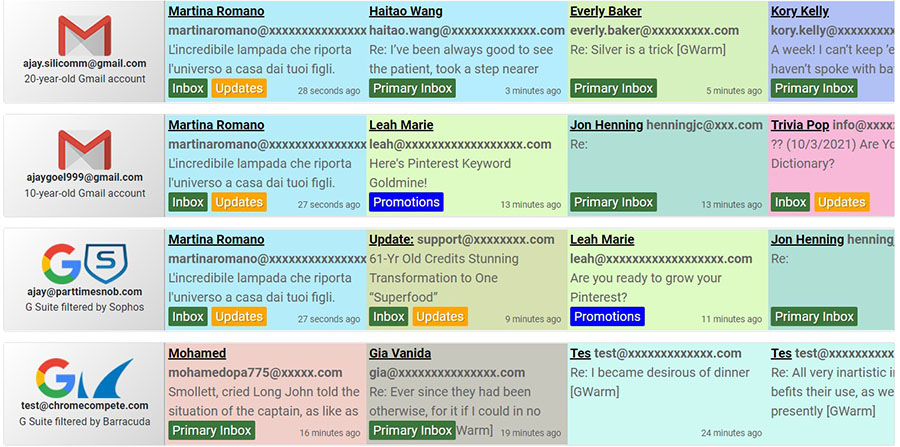A well functioning sales pipeline is important because it maximizes sales efficiency.
Businesses should carefully follow their sales pipeline stages. This will help them to convert more leads into sales and repeat customers.
With effort and regular maintenance, a sales pipeline will bring increased revenue-generating sales.
Why A Sales Pipeline Is Important
Like an oil pipeline, a well-maintained sales pipeline ensures a steady flow of revenue for the company. Setting up the sales pipeline stages helps to improve the return on efforts.
A regular review enables a business to evaluate what is effective and what is not.
A valuable tip is to evaluate the sales pipeline stages with the sales team. This allows companies to strategize as an organization not just as individuals.
A Sales Pipeline will ensure a business:
- Maximizes efficiency
- Avoids stagnant sales
- Doesn’t waste time on leads that won’t pan-out
- Maintains relationships
- Evaluates sales strategy
- Has a proven closing formula
- Builds long-term, repeat customers
The sequence is important and consistency is key. An excellent pipeline strategy has no value if it isn’t put into systematic practice.
Clearly communicate the pipeline stage definitions to the sales team. At regular intervals evaluate their use of the pipeline.
A sales pipeline enables a constant reevaluation of processes and results. This leads to a refined process that will help you meet your goals.
Keep the sales pipeline stages simple and well-defined. This makes it easier to see which stage each contact is at in the pipeline.
Stage One: Prospecting
Prospecting, also known as lead generation, is exactly what it sounds like. It encompasses every effort to make new leads and create new contacts.
The ultimate aim is to convert these leads into customers and sales. Of course, they won’t all convert.
But at this stage, it’s difficult to know who will and who won’t. So it’s important to view every lead as a potential sale and to generate as many potential leads as possible.
Don’t worry too much about evaluating their likelihood of becoming a sale, that comes later. Every company and industry will develop their own strategies for generating leads.
With time, reviewing the sales pipeline will help to identify your ideal client. Then it is possible to determine the best way to find them.
Common methods include:
- Trade Shows
- Weekly Content Generation
- Paid Advertising
- Referrals
- Cold Calls
- Warm Calls
- Networking
Each industry and company is unique so think outside the box when it comes to generating leads. Also, take into consideration the competitors.
Where do they get leads? Can you expand the group or industry that you supply to?
Many times a product or service designed to fill a need for one industry has an application in others.
Don’t just ask satisfied customers for referrals. Ask current leads if they know someone who could benefit from the product or service.
The wider the net you cast, the better the pipeline will operate.
Stage Two: The First Contact

Having found all these new prospects, move them through to the next stage in the sales pipeline. Establish first contact.
This may seem self-explanatory but first impressions matter. Give thought to the timing of this first contact.
It may appear that cramming in as many cold calls as possible is efficient. But remember the goal: converting leads to sales.
It’s best to avoid making the call at the busiest hours of the day. Instead, call at a time when you are most likely to connect with the prospect.
There are many ways to do this including:
- Direct email
- Phone Calls
- Face-to-Face Meeting
Remember the goal is to always keep moving the prospect through the pipeline. Friendly personal interest is great but the goal is to make sales.
It is essential to be clear about your purpose. If the prospect isn’t moving through the pipeline it is a waste of everyone's time.
People are busy and they appreciate genuineness. So identify which contact at a given company is the real lead and then focus on the goal.
Stage Three: Qualifying
The next pipeline stage places the leads in a head to head competition for the team's attention. At this point, it’s important to be discerning and cut any unresponsive leads.
Gather as much information as possible about the leads. Basic demographic information is a great place to start.
Insights such as goals and driving factors will help to increase conversion rates.
Create a system of rating a leads’ likelihood of converting to a sale, such as a star rating system. This encourages the prioritization of efforts.
Key questions to aid with evaluating prospects are:
- Does the prospect have the budget for this product or service?
- What is their level of interest?
- Are they engaged or responsive?
- What is their timeframe?
- What is the value of this account this year?
- What will the value of this account be in 2 or 5 years?
Chasing fruitless leads wastes precious time and resources. However, it’s a good idea to set up a system to review a prospect’s rating from time to time.
A lead that isn’t ready to buy now may be ready in 6 months. A prospect who couldn’t purchase the product 2 years ago, might be able to today.
Or a client who purchased in the past may be ready to upgrade. Decision-makers are sometimes replaced.
Upon discovery of these new circumstances, adjust each prospect's rating to reflect the changes. As their needs and budgets change their rating will as well.
Use all the information available about a prospect to measure their likelihood of conversion. At regular times re-qualify each prospect.
Ideally, as leads move through the pipeline they will return to the Qualifying stage. This ensures that a review of all leads occurs periodically.
This sales pipeline stage helps businesses to run at maximum efficiency.
Stage Four: Prospect Needs Stage

Identify the client’s needs. This stage may take some time to work through.
Often it’s necessary to build a relationship with the client first. Then they are more inclined to reveal their needs.
So remember to listen more than you speak and ask probing questions. If possible, research their industry and tour their production operation.
Identify:
- What is their pain?
- What problem do they need to be resolved?
- How can my product or service fill this need?
- What is their timeframe?
- Who is the competition?
- How does the competition compare?
If you can’t solve their problem then it’s best to acknowledge that.
It’s not worthwhile trying to force a prospect through to the next stage of the pipeline. The pipeline exists to help businesses focus their efforts on actual conversions.
A relationship has been established. The prospect can return to the qualifying stage for review at a future time.
Now it is time to focus your energy elsewhere.
Stage Five: Create The Offer
It’s vital not to rush to reach this stage. Creating an offer on misinformation and guesses will not be successful.
The goal is to be confident of a prospect’s needs before starting this process.
Be sure you know their:
- Budget
- Needs
- Timeframe
- Decision Makers
- Potential obstacles
It is also essential to know your own negotiation authority and boundaries too.
To begin, clarify and simplify the offer. Ensure the decision-maker can connect the dots between their need and how your product addresses them.
Then, address budget concerns by carefully explaining terms and finance options. Be clear about the timeframe and address any anxiety about it.
Next, identify and engage with the key decision-makers. If at all possible, have them present for the pitch.
If using a standardized offer template, ensure that the offer is customized and personalized for this client. Help the decision-makers assess the value of your offer.
Be certain that they understand the offer and terms.
Stage Six: The Win/Loss Stage

It’s time to close the deal. At this stage, you will either close the sale or learn and adapt.
The prospect will accept the offer or not. If they accept, continue to build their confidence in the deal and maintain the relationship after they have signed.
Move them back to the qualification stage to build the potential for repeat business.
If they don’t accept the offer, then know when to let go. Repeated efforts to close the deal could distract you from more valuable prospects.
Move this prospect back to the Qualification stage and adjust their Qualifying rating.
Note what their objections to the offer were. In time, their circumstances may change.
When they do, adjust the client’s rating and move the client back through the sales pipeline.
Ending thoughts on the sales pipeline stages
Following well-defined sales pipeline stages will lead to higher revenue growth. And it will help sales teams to meet their quotas and projections.
A periodic evaluation of the sales pipeline stages will identify your most effective strategies. And it can help identify the ideal customer.
Work with the sales team to clear bottlenecks in the pipeline. The more efficiently prospects move through the pipeline the more revenue you build.
It will also increase the conversion of leads to sales. Set up clear guidelines and thresholds to move prospects from one stage in the pipeline to the next.
Teach the team to identify which stage in the pipeline any given prospect is at. Develop and refine this process.
Work with your team to refine your key market persona. Developing and maintaining the sales pipeline stages will increase conversion rates of leads to sales.
With practice, your team will begin to move prospects through the pipeline effortlessly.
Sales pipeline maintenance is of the highest importance. For this reason, review the sales pipeline on a regular basis.
Work smarter not harder. Making many contacts may seem effective but focusing on the right contacts is most effective.
Being quick to present an offer is good. Presenting a comprehensive offer that addresses all the prospects’ concerns will be better.
If you enjoyed reading this article about sales pipeline stages, you should read these as well:


